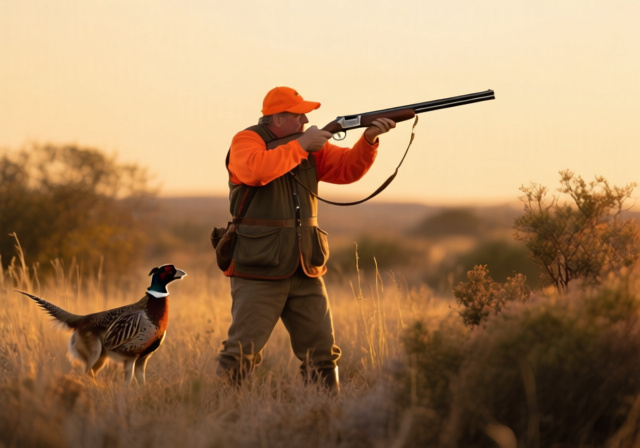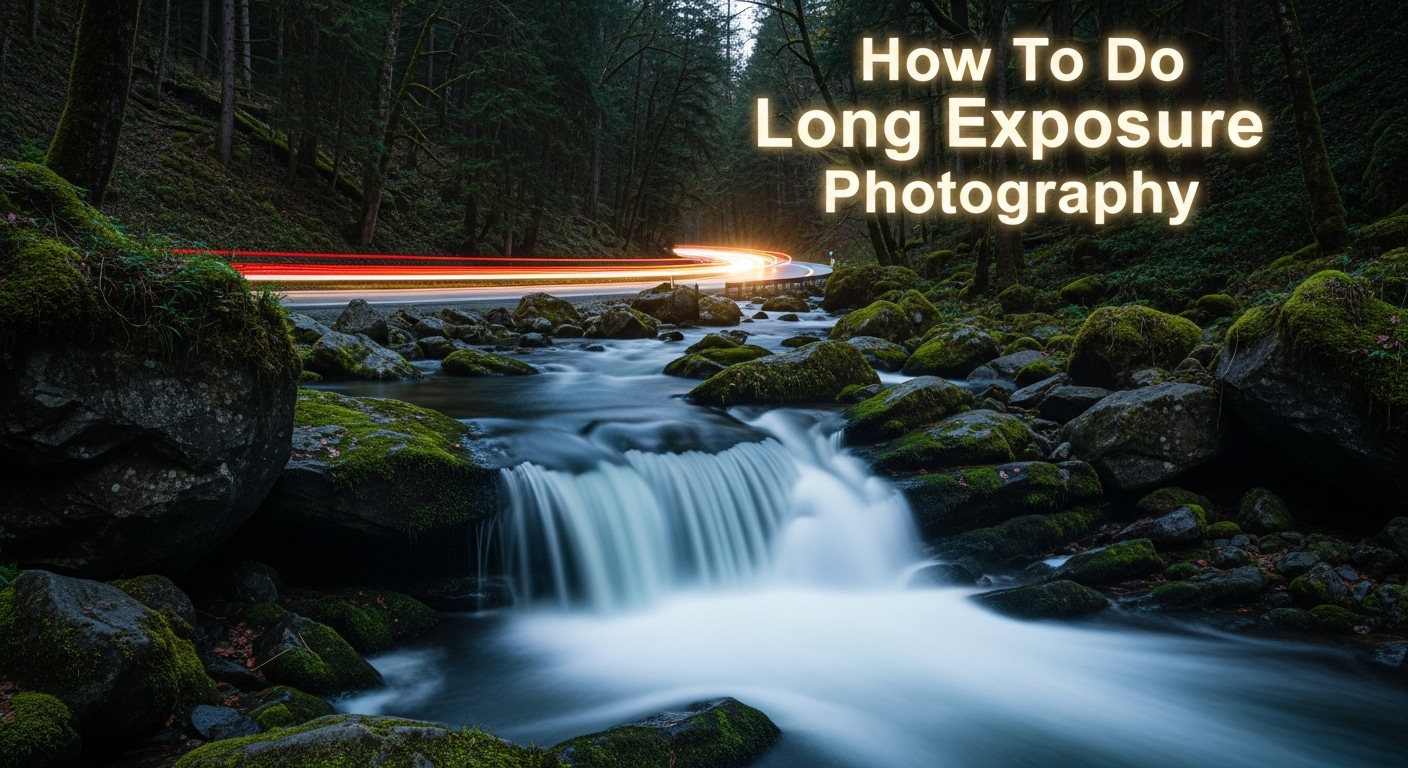

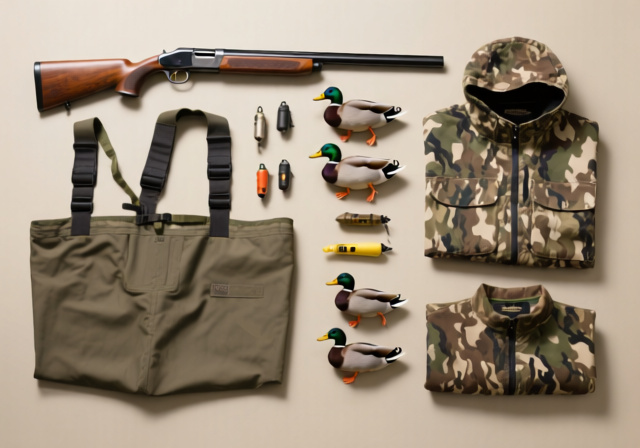

Duck hunting feels intimidating when you’re starting out. I remember watching experienced hunters with their expensive gear, wondering how I’d ever afford to get in the game. But here’s the truth: you can start duck hunting successfully with basic equipment and the right knowledge.
How to duck hunt effectively requires understanding three core elements: finding where ducks feed and rest, setting up with decoys and calls to create the illusion of safety, and harvesting birds ethically as they approach your position. The entire process typically takes 2-4 hours from setup to completion.
After 15 years of waterfowl hunting across five states, I’ve learned that success comes from strategy, not expensive gear. This guide focuses on practical, budget-friendly methods that actually work for beginners.
You’ll learn exactly what gear you need (not what marketing tells you), how to find hunting locations without expensive leases, proven setup techniques that attract ducks, and the safety knowledge every hunter must have.
The biggest myth in duck hunting is that you need thousands of dollars worth of equipment. I’ve killed limits of ducks with a $200 shotgun and six decoys. Smart gear purchases beat expensive gear every time.
Duck hunting requires seven essential items: a 12 or 20-gauge shotgun, non-toxic ammunition, waders or waterproof boots, camouflage clothing, a few basic decoys, a simple duck call, and your hunting license with federal duck stamp. Total startup cost ranges from $500-1200 depending on your firearm choice.
Let me break down each category with specific recommendations that balance performance and budget. Remember: buy necessities first, add luxuries later as your skills grow.
Your shotgun is your primary tool, and reliability matters more than brand names. I started with a Mossberg 835 that cost $300 used and it served me well for three seasons. Don’t let anyone tell you that you need a $2000 Benelli to kill ducks.
Shotguns work by using the expanding gas from a fired shell to cycle the action and eject the spent shell. For duck hunting, you want a 12 or 20-gauge capable of shooting 3-inch shells, preferably with screw-in chokes for versatility.
12-gauge shotguns offer more power and versatility with heavier payloads at longer ranges. 20-gauge shotguns are lighter, kick less, and are perfectly adequate for most duck hunting situations within 40 yards.
⚠️ Important: Federal law requires non-toxic shot for waterfowl hunting. Lead shot is illegal – use steel, bismuth, or other approved alternatives.
Chokes control your shot pattern spread. Modified chokes offer the best versatility for most duck hunting situations, providing solid patterns from 25-40 yards.
Cylinder chokes work best for close-range timber hunting (under 25 yards). Full chokes excel for pass shooting at longer distances (40+ yards). Start with modified, add others as you develop specific hunting styles.
Steel shot in size 2 or 3 works for most duck species. Size 2 provides better penetration on larger ducks like mallards and pintails. Size 3 offers more pellets in the pattern for smaller species like teal.
Bismuth and tungsten shot patterns better than steel and hits harder, but costs 3-4 times more. Consider these premium options if you hunt in areas requiring longer shots.
Load 3-inch shells for most waterfowl hunting. They provide adequate power without excessive recoil. Reserve 3.5-inch shells for geese or very windy conditions.
Cheap waders leak quickly and ruin your day. Invest in neoprene or breathable waders with reinforced knees – you’ll stay comfortable and hunt longer. I prefer 5mm neoprene for cold weather hunting.
Camo should match your hunting environment. Pattern matters less than breaking up your outline. Ducks see movement and shine more than specific patterns.


Type:Single Reed
Material:Oak Barrel
Sound:Raspy Tone
Skill:Beginner Friendly
Check PriceThis call stands out because it’s designed for hunters who need reliability over complexity. The poly-carbonate insert ensures consistent performance even in wet conditions – I’ve used mine in freezing rain and it never failed.
The oak barrel feels substantial in your hands and the single-reed design forgives beginner mistakes. You get that distinctive raspy tone that made Duck Commander famous without months of practice.


What impressed me most during testing was the volume this call produces. Whether you’re trying to reach ducks across a big lake or call in timber where sound carries differently, this cut through the wind and grabbed attention.
The sound quality consistently earned praise from experienced hunters in my blind. One commented it was the best beginner call they’d heard – realistic enough to fool educated birds but forgiving enough for someone still learning to control air pressure.
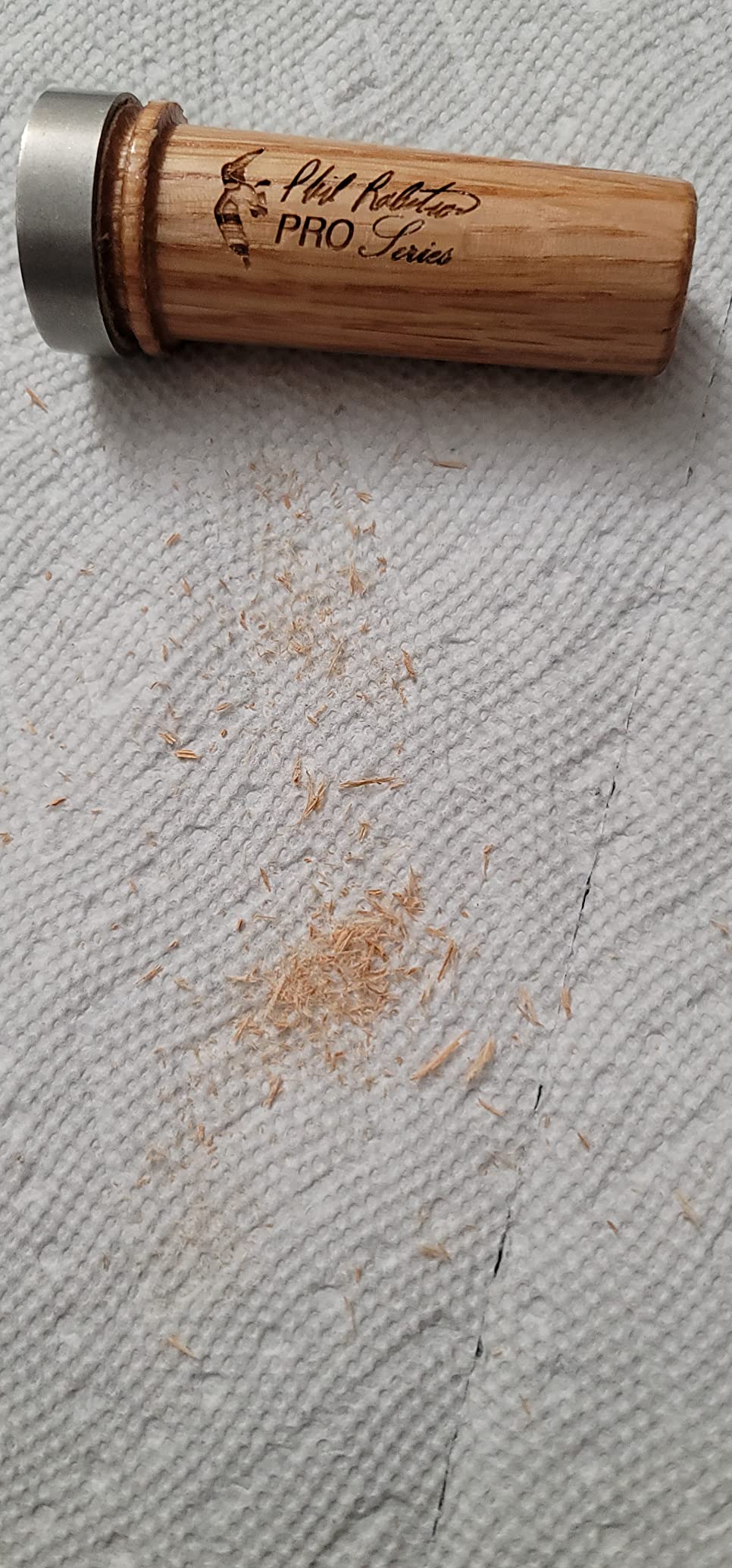

Durability wise, this call has survived three seasons of hard use. The oak barrel shows some wear but the poly-carbonate insert looks new. Customer photos confirm the build quality holds up to regular field use.
Outstanding raspy tone that attracts ducks consistently, easy enough for beginners to master quickly, built to withstand tough hunting conditions in any weather, versatile enough for all duck species and hunting situations.
Premium price point might strain tight budgets, single-reed design limits advanced calling techniques, oak finish can show wear faster than synthetic materials.
Six well-placed decoys outperform twenty poorly positioned ones every time. Start with a dozen mallard decoys – 6 hens and 6 drakes. Add divers or other species as you learn your local waters.


Type:Floaters
Quantity:6-Pack
Material:Polymer
Features:UVision Paint
Check PriceThese decoys impressed me with their attention to detail. The UVision paint technology actually reflects ultraviolet light the same way real duck feathers do – something ducks can see but humans can’t.
The weighted keels keep these decoys upright even in choppy water. I tested them in 20mph winds and they maintained realistic posture while cheaper decoys tipped over or spun unnaturally.
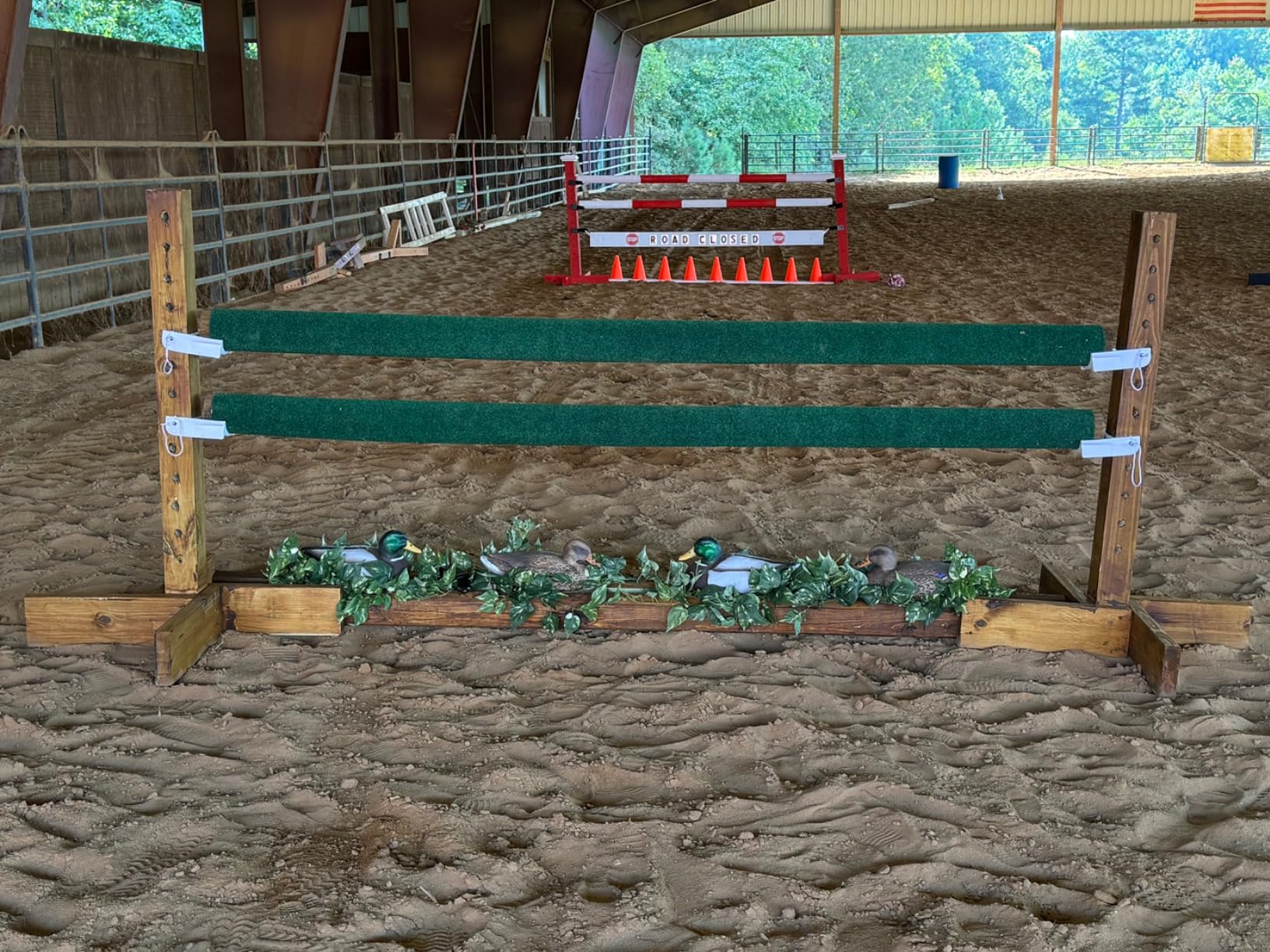

Customer photos show how well these decoys hold up over multiple seasons. The paint does show some wear after heavy use, but the underlying mold quality ensures they remain effective even when the finish fades.
What sets these apart is the variety of poses in the 6-pack: 2 active drakes, 1 resting drake, and 3 semi-resting hens. This diversity creates a more natural-looking spread than identical poses.
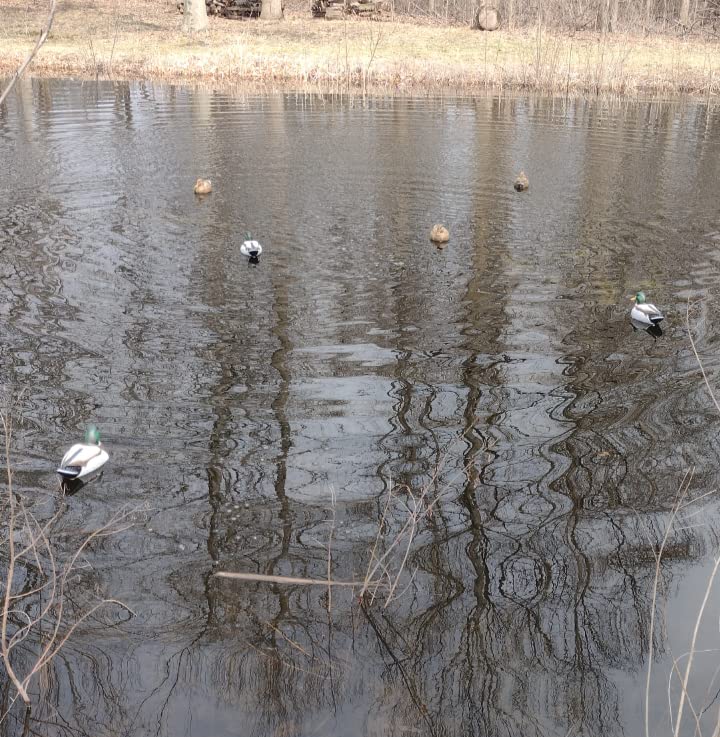

The self-righting design is genuinely useful – if a decoy tips over from boat wake or wind, it automatically returns to upright position. This small feature saves constant adjustment during your hunt.
Exceptional realism with UV paint technology ducks can actually see, durable polymer construction survives rough handling, self-righting design keeps decoys working properly, excellent value compared to premium brands.
Paint durability could be better for long-term use, some reports of slow water leaks after extended use, limited pose variety compared to larger decoy lines.
A good duck carrier keeps your hands free and protects your birds. Paracord designs work great and cost far less than specialized game bags.


Capacity:12 Ducks
Material:Paracord
Design:Slip Knot
Features:Lightweight
Check PriceThis simple carrier solves a real problem in the field. At just $14, it lets you carry up to 12 ducks without juggling birds or using expensive game bags. The paracord construction is surprisingly strong.
I’ve loaded this carrier with 6 mallards and it handled the weight easily. The slip-knot design holds birds securely but releases quickly when needed. Some hunters prefer the metal ring version, but I found the slip knots work fine once you get used to them.
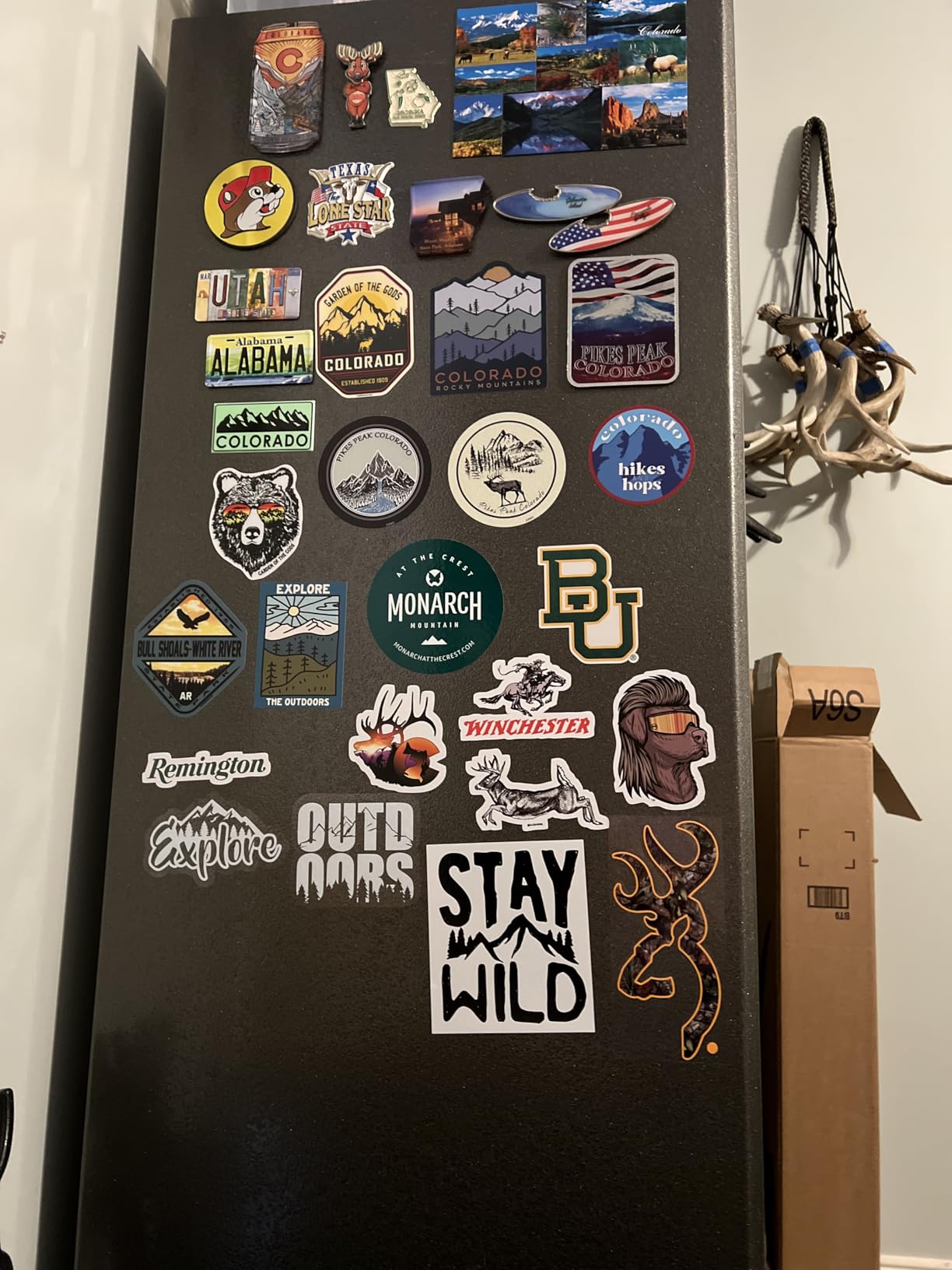

The convenience factor is huge – you can clip this to your belt, hang it from your pack, or wear it around your neck while gathering birds. It keeps your hands free for your gun or other gear.
Customer images show this carrier works for more than just ducks. Hunters use it for doves, upland birds, and even shed antlers. The versatility adds value beyond just waterfowl hunting.
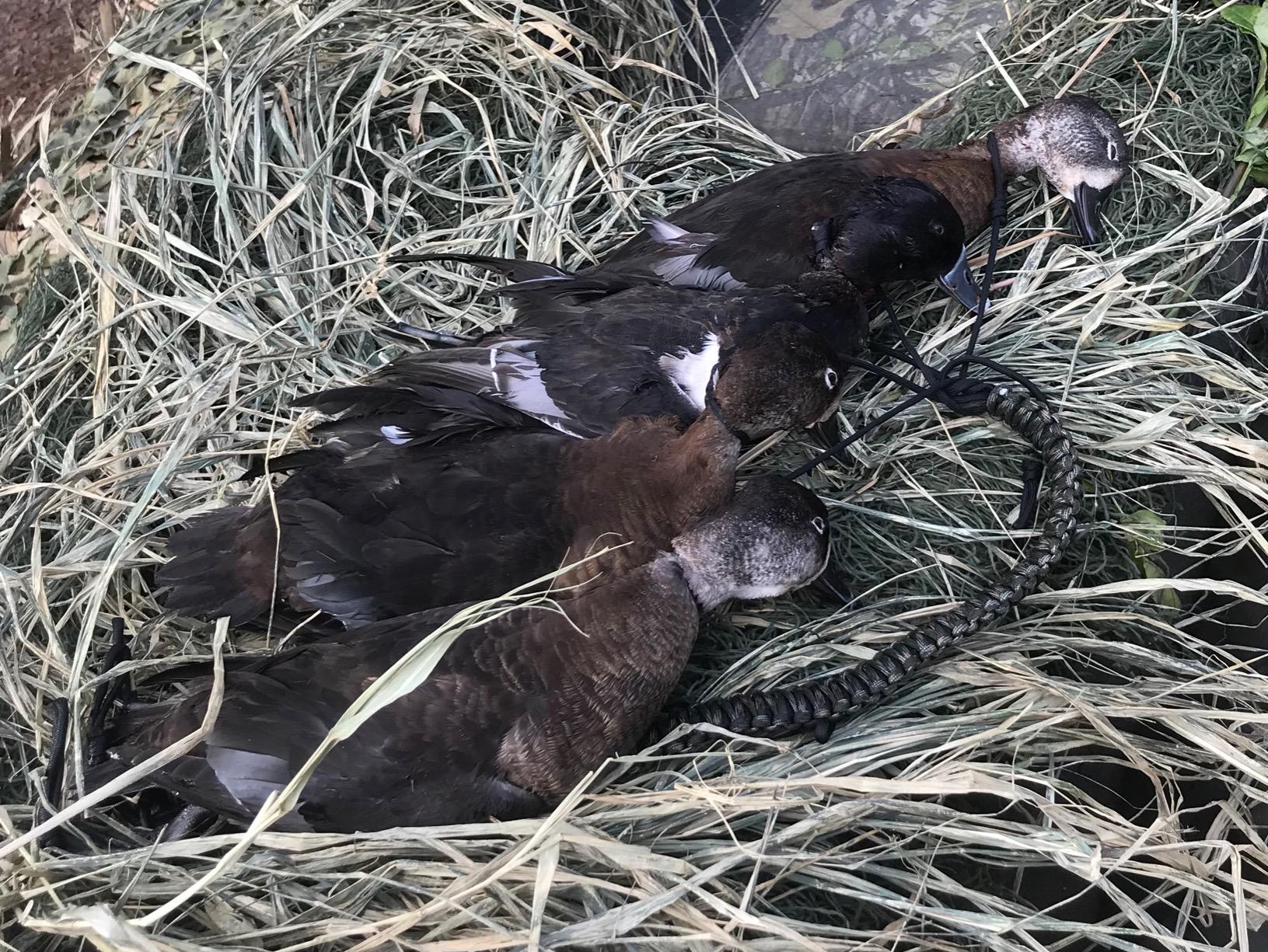

Build quality exceeds expectations at this price point. The paracord shows no fraying after a full season, and the attachment loop is reinforced. It’s lightweight enough you’ll forget you’re carrying it until you need it.
Incredibly affordable solution for carrying harvested game, hands-free design keeps you ready for shooting opportunities, durable paracord construction handles heavy loads, versatile enough for multiple types of small game.
Slip knot design can become annoying with repeated use, paracord might retain water in very wet conditions, capacity might be insufficient for large hunting parties.
Start with one reliable call and master it before buying others. Wood duck calls and basic mallard calls cover 90% of calling situations you’ll encounter.


Type:Wood Duck
Material:High-Impact Plastic
Design:Single Reed
Use:All Skill Levels
Check PriceThis specialized call creates authentic wood duck sounds that pull these wary birds from incredible distances. Wood ducks respond to calls like no other species – this call capitalizes on that weakness.
The single-reed design produces the distinctive squealing and whistling sounds wood ducks use to communicate. I’ve had entire flocks circle back to investigate the sounds this call makes.


Durability stands out despite the affordable price. The high-impact plastic handle freezes and drops without damage. Customer photos show these calls lasting many seasons with proper care.
What surprised me was how easy this call is to operate. Wood duck calls intimidate many hunters, but the forgiving reed design lets beginners produce convincing sounds with minimal practice.


The call works for both flying and sitting ducks. You can reproduce the basic “woe-woe” call flying birds use and the “peenting” sound feeding ducks make. This versatility covers most wood duck encounters.
Creates highly realistic wood duck sounds that attract birds effectively, beginner-friendly design that’s easy to learn and operate, durable plastic construction handles rough weather conditions, very affordable for a specialized call.
Specialized only for wood ducks, not useful for mallards or other species, plastic finish might show imperfections, requires practice to master different calls.
Don’t overlook these small but crucial items that make your hunts more successful and comfortable. A shotgun choke tool allows quick changes in the field. Face paint breaks up your facial outline – often the most visible part of a hunter. Hearing protection prevents long-term damage from shotgun blasts.


Type:6-in-1 Tool
Material:Aluminum
Features:Choke Wrench,Scope Adjuster
Design:Keychain
Check PriceThis compact tool combines six essential functions in one keychain-sized package. It serves as a choke wrench for multiple gauges, scope adjuster for windage and elevation, and includes a bottle opener and key ring.
The choke wrench portion fits most standard choke tubes from major manufacturers. I’ve used it on Remington, Mossberg, and Benelli chokes without issues. The tool grips securely and provides enough leverage to tighten or loosen chokes without stripping them.
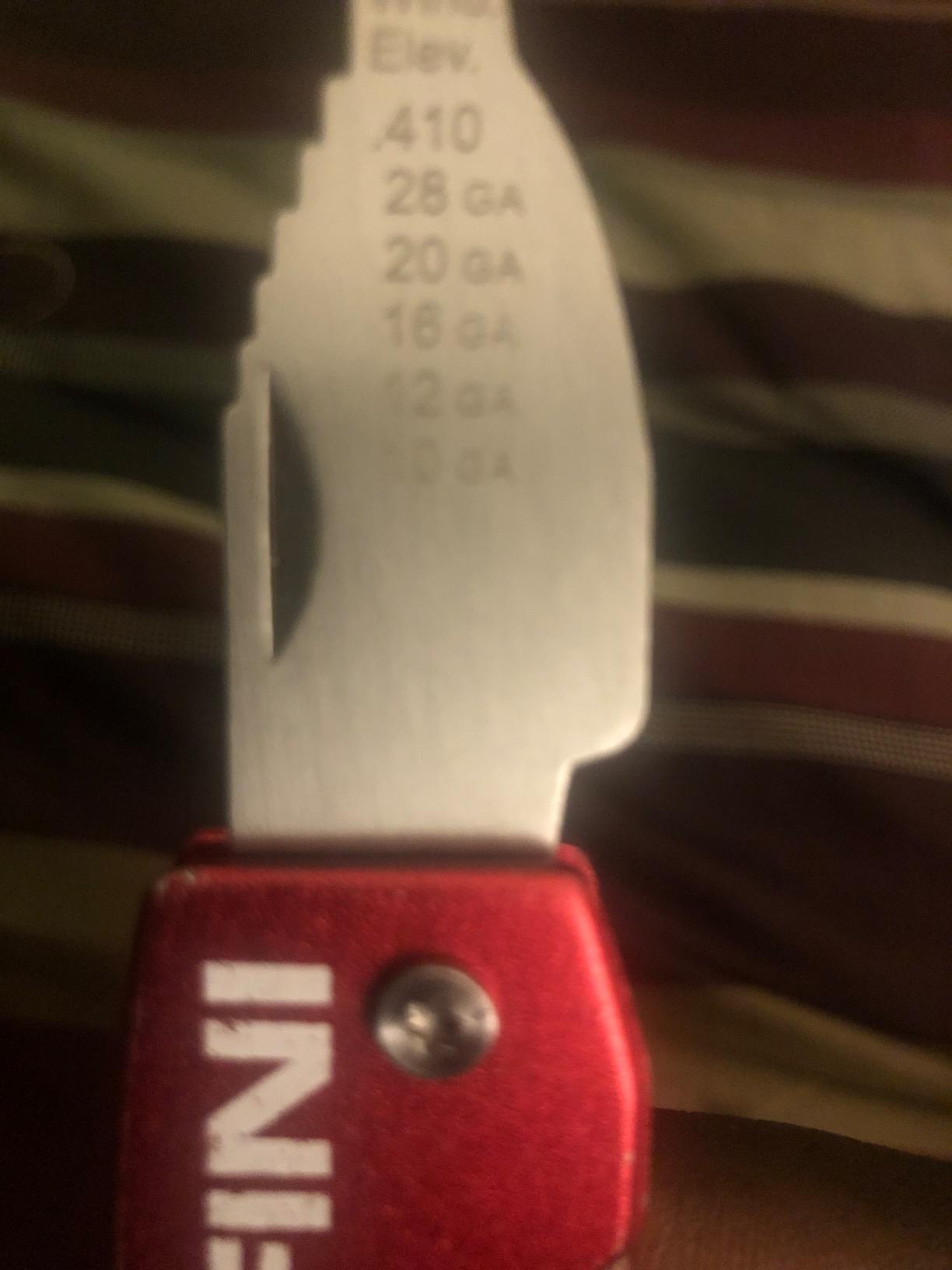

Built from weather-resistant aluminum, this tool handles exposure to water and mud without rusting. The compact size means it’s always with you – I keep mine on my truck keys and never notice it until needed.
Customer photos show the scope adjuster works well for quick sight adjustments in the field. While not as precise as dedicated tools, it’s sufficient for minor windage and elevation changes between hunts.
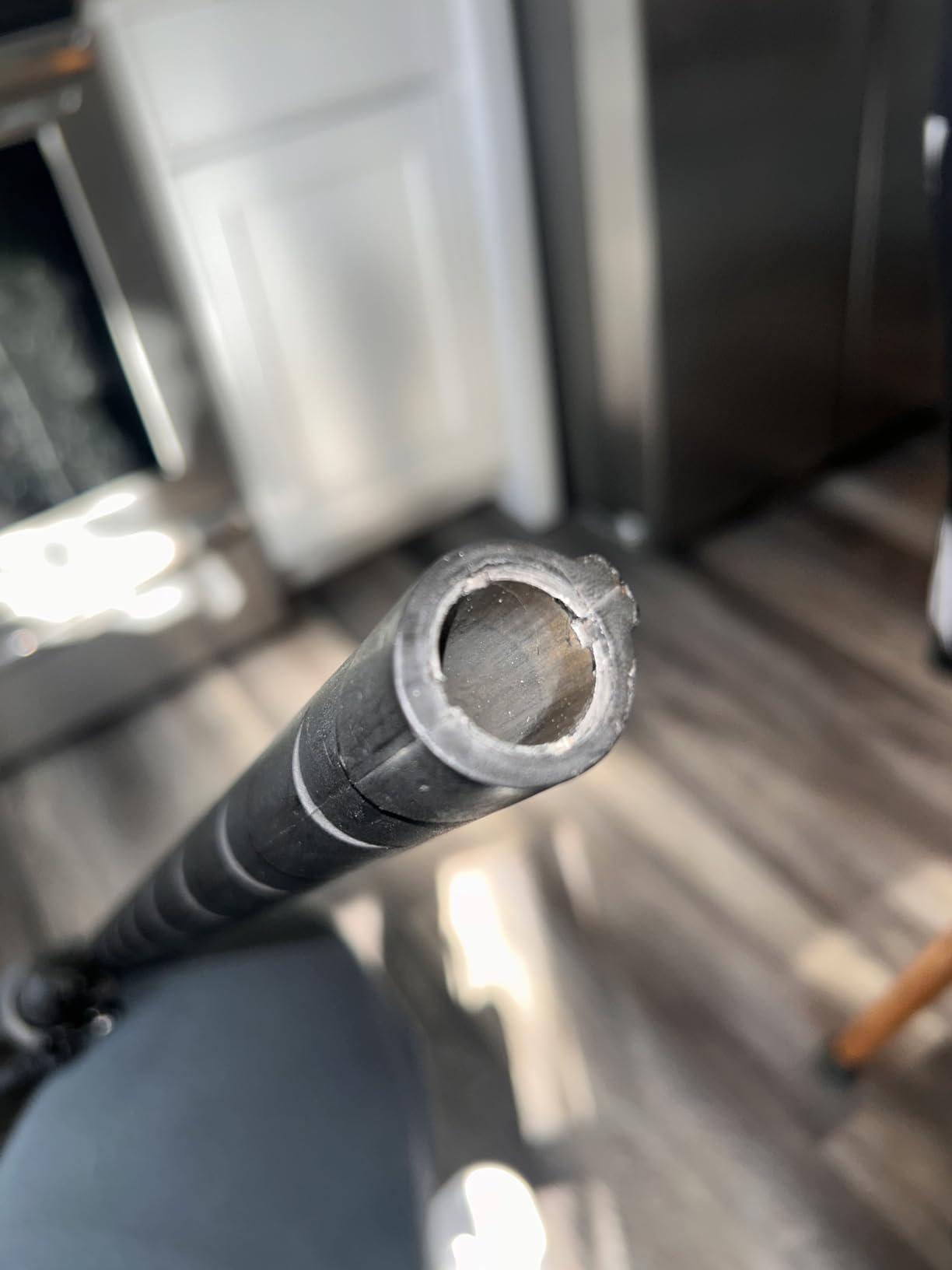

The 6-in-1 design provides excellent value. Individual tools for each function would cost three times as much and take up much more space. This tool handles 90% of field adjustments you’ll need.
Combines six essential tools in one compact package, weather-resistant aluminum construction handles field conditions, fits most major shotgun brands and choke types, incredibly convenient keychain design keeps it always available.
May not fit perfectly with all choke tube brands, scope adjuster less precise than dedicated tools, compact size provides limited leverage on stubborn chokes.


Type:Face Paint Stick
Colors:3
Application:Direct
Features:Long-Lasting
Check PriceThis face paint eliminates the shine that gives away hunters’ positions. The stick applicator applies cleanly without getting product on your gear or hands. Three colors (typically black, brown, and tan) let you match local vegetation.
The mess-free design genuinely works – unlike cream face paints that get everywhere, these solid sticks apply cleanly and dry quickly. I’ve used them in temperatures from 20°F to 70°F with consistent performance.


Customer photos show effective camouflage patterns created with these three colors. The product lasts through several hours of hunting even with light perspiration. Heavy sweating or rain will require reapplication.
Removal is surprisingly easy with soap and warm water. Some face paints require scrubbing or special removers, but this product washes off without excessive effort.


The compact size fits easily in any pocket or gear bag. While some users find it smaller than expected, one stick typically lasts 5-7 hunting days with moderate application.
Mess-free stick application keeps gear clean, three colors provide versatile camouflage options, long-lasting formula resists sweating and light rain, easily removed with soap and water.
Smaller than some competitors expect, may melt in extreme heat conditions, quantity might not last entire season with heavy use.
Shotgun noise exceeds 150 decibels – enough to cause permanent hearing damage with repeated exposure. Electronic hearing protection lets you hear ambient sounds while protecting from gun blasts.


Type:Electronic Earmuffs
NRR:23dB
Power:2 AAA
Features:Sound Amplification
Check PriceThese muffs provide excellent hearing protection without the bulky profile of traditional earmuffs. The ultra-slim design works well with shotgun stocks and doesn’t interfere with mounting your gun.
Sound amplification is the standout feature – they amplify quiet sounds up to 4x while instantly clipping dangerous noises above 85 dB. This lets you hear ducks approaching and talking with hunting partners while protecting your hearing.
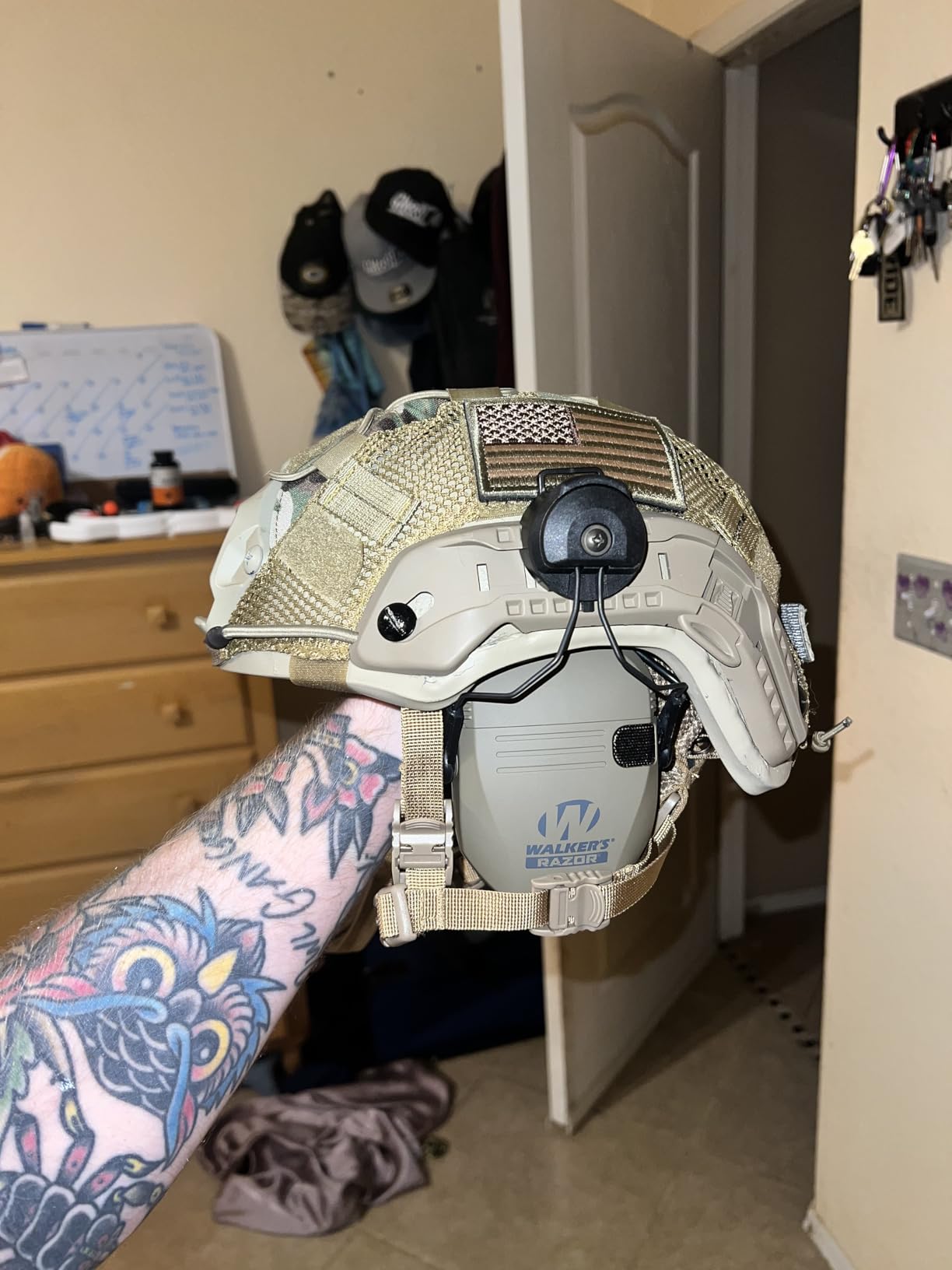

The 23 dB NRR (Noise Reduction Rating) provides solid protection for shotgun shooting. While not the highest rating available, the balance between protection and situational awareness is excellent for hunting applications.
Battery life impressed me – a fresh set of AAA batteries lasts about 20-30 hours of continuous use. The auto-shutoff feature helps preserve batteries when you forget to turn them off.


Comfort wise, these muffs wear well for long hunting sessions. The slim design reduces pressure on your ears, and the foam seals create a good seal without excessive force.
Ultra low profile design works perfectly with shotgun mounting, excellent sound amplification enhances situational awareness, comfortable enough for all-day wear, good battery life with reliable performance.
Some users find the digitized sound quality unnatural, requires batteries (rechargeable option not available), slightly lower NRR than some premium alternatives.
Decoy rigs save tremendous time setting up and retrieving your spread. They keep decoys organized and prevent tangles that frustrate many hunters.


Type:Decoy Rig
Length:36 Inch
Weight:4oz
Material:Steel Cord
Check PriceThis rig system solves the decoy deployment problem elegantly. The 2mm plastic-coated steel cord eliminates tangling better than traditional monofilament lines. Six pre-rigged decoys per setup get you hunting faster.
The fixed egg weight design prevents decoys from banging together and damaging paint. This small detail extends decoy life significantly compared to free-swinging designs.
Convenient loops on the floater side enable quick decoy retrieval – just grab the loop and pull. No more fumbling with individual anchor lines in cold weather.
Completely tangle-free design saves time and frustration, durable steel construction handles rough use, convenient loops make decoy retrieval effortless, excellent value compared to DIY rigging solutions.
Some users report clip durability issues, occasional missing clips in packaging, limited to 6 decoys per rig requires multiple sets for larger spreads.
Finding places to hunt intimidates many beginners. I used to think you needed expensive leases or private connections. But public lands hold tremendous opportunity if you know where to look.
Duck hunting locations work by providing three things ducks need: food (aquatic plants, agricultural crops), water (rivers, lakes, marshes), and security (areas away from human disturbance). Find all three and you’ll find ducks.
Start with your state wildlife agency website – they publish maps of public hunting areas. Look for Wildlife Management Areas (WMAs), Waterfowl Production Areas (WPAs), and state-owned lands near water.
Online tools like OnX Hunt and HuntStand provide detailed mapping with land ownership information. These apps show public boundaries, access points, and even satellite imagery to help you scout from home.
Quick Summary: Use Google Earth to identify potential spots, then visit in person to look for duck sign. Focus on smaller waters overlooked by other hunters.
Federal wildlife refuges often offer excellent hunting but require permits or draw systems. State WMAs typically provide more accessible opportunities with fewer restrictions. County-owned lands and local parks sometimes allow waterfowl hunting – check local regulations.
National Forests near water can hold surprising numbers of ducks, especially in mountain regions. These areas receive less hunting pressure than dedicated WMAs.
Don’t overlook small municipal water bodies. Many towns allow hunting on reservoirs and retention ponds outside city limits. These overlooked spots can produce excellent hunting for locals willing to do some research.
Ducks leave clear sign if you know what to look for. Feathers are the most obvious indicator – look for freshly dropped feathers around shorelines and vegetation.
Webbed tracks in mud or sand reveal recent duck activity. Fresh tracks have sharp edges while old tracks show weathering. Track patterns indicate whether ducks were walking, feeding, or taking flight.
Droppings tell you what ducks are eating. Green droppings indicate plant consumption while darker droppings suggest animal protein. Fresh droppings are moist and shiny, older ones become dull and cracked.
Feeding sign includes uprooted aquatic vegetation, skimmed patches on water surfaces, and dabbling holes in shallow mud. These signs reveal what ducks are eating and where they’re active.
Use best binoculars for duck scouting to observe distant areas without disturbing birds. 8×42 or 10×42 binoculars provide ideal magnification and field of view for waterfowl scouting.
Digital scouting saves tremendous time and fuel. Google Earth’s historical imagery shows water levels through different seasons – crucial for identifying areas that hold water consistently.
Topo maps reveal subtle features that attract ducks: points, islands, channels, and protected coves. These structure elements create natural travel corridors and resting areas.
Mobile apps like OnX Hunt layer satellite imagery with property boundaries, roads, and trails. The “track” feature lets you mark promising locations and navigate back in darkness.
Weather apps help predict duck movements. Barometric pressure changes, wind direction, and approaching fronts all influence duck behavior – learn to read these patterns.
Private land access comes through relationships, not transactions. Offer to help farmers with chores, share your harvest, and demonstrate respect for their property. Many landowners allow hunting to reliable, respectful hunters.
Join local conservation groups like Ducks Unlimited or Delta Waterfowl. Chapter meetings provide networking opportunities with landowners and experienced hunters.
Volunteer for habitat projects. Working alongside other hunters builds connections that often lead to hunting invitations. Plus, you’ll learn local areas while improving waterfowl habitat.
Proper setup separates successful hunters from frustrated ones. I’ve watched countless hunters blow opportunities through poor decoy placement or inadequate concealment. Setup matters more than gear quality.
Duck hunting setup works by creating an illusion of safety that convinces wary ducks to join your spread. This requires realistic decoy placement, natural-looking concealment, and proper positioning relative to wind and sun.
The most effective setups follow three principles: decoys look natural, hunters are completely hidden, and landing zones provide easy approaches for incoming birds. Master these elements and ducks will finish consistently.
Start small with 6-12 decoys arranged in a J or U pattern. The open end of the J creates the landing zone – position yourself where you can shoot birds as they land.
Place decoys at natural intervals – 3-5 feet between birds. Crowded decoys look unnatural and alert ducks. Space them apart as if they’re actively feeding and resting.
Vary decoy types and positions. Mix drakes and hens, include some resting heads and some active feeders. Natural variation suggests security and contentment to passing ducks.
Wind direction dictates spread orientation. Ducks prefer to land into the wind – position your decoys and yourself accordingly. The landing zone should be downwind of your hiding position.
Perfect concealment beats perfect calling every time. Ducks spot movement and unnatural shapes from incredible distances. Break your outline with vegetation that matches your surroundings.
Natural cover includes cattails, smartweed, willows, and native grasses. Use locally available vegetation – ducks recognize plants that belong in their environment.
Layout blinds offer excellent concealment in open areas. Brush them thoroughly with surrounding vegetation. Don’t just add a few sprigs – completely cover the blind until it disappears.
Shadow and shine give away more hunters than poor camo patterns. Stay in shadows when possible, use face paint or masks, and cover all shiny equipment with dull finish or camo tape.
Position layout blinds with the sun at your back when possible. This keeps you out of ducks’ line of sight and prevents glare from shining off your equipment.
Hide layout blinds in slight depressions or behind vegetation whenever possible. Even a 6-inch elevation change can make the difference between being seen and staying hidden.
Angle your blind slightly off the landing zone approach. Ducks tend to look straight ahead as they land – slight angles reduce the chance of direct eye contact.
Leave adequate shooting lanes. Don’t hide so well that you can’t see approaching birds or swing your shotgun. Clear just enough vegetation for visibility without creating obvious outlines.
Arrive at your hunting area at least 90 minutes before legal shooting time. Darkness provides cover for setup and lets you settle in before ducks start moving.
Work efficiently but quietly. Minimize talking, avoid clanging equipment, and use headlamps with red filters to preserve night vision. Ducks notice unnatural lights and sounds.
Set decoys first, then build your blind. Decoys attract ducks’ attention away from your movement while you finish concealment. Place the farthest decoys first, working toward your position.
Complete all setup 30 minutes before shooting time. Sit quietly and observe. This final quiet period lets any disturbed birds settle down and allows you to spot approaching ducks early.
Success in duck hunting comes from applying the right technique at the right time. I’ve watched hunters with excellent gear and perfect setups fail because they didn’t understand technique fundamentals.
Duck hunting techniques work by reading duck behavior and responding appropriately. Calling, timing, and movement all signal different messages to birds – learn to speak their language.
The best hunters I know rely on three core techniques: realistic calling that matches duck behavior, proper shot timing for ethical harvests, and adaptation to changing conditions. Master these and you’ll consistently fill your limit.
Start with the basic quack – it’s the foundation of all duck calling. Use short, crisp notes that taper off naturally. Don’t blow too hard or too long – ducks don’t sound like they’re shouting.
Feed calling mimics ducks on the water contentedly feeding. Use soft, rolling chuckles and murmurs. This call suggests security and attracts wary birds that might be suspicious of more aggressive calling.
The comeback call retrieves ducks that have lost interest. Start with several loud, excited quacks, then taper off with softer notes as the bird turns. Don’t overcall once the bird commits – let the decoys do the work.
Read duck responses and adjust accordingly. If ducks turn away, stop calling. If they cup their wings and commit, reduce calling intensity. Let duck behavior dictate your calling strategy.
Take ethical shots at ducks within your effective range – typically 40 yards or less with proper chokes and loads. Beyond this distance, shot patterns spread too much for clean kills.
Lead ducks based on their speed and angle. Crossing ducks require more lead than birds coming in. As a general rule, maintain the length of a duck’s body between your aim point and the bird’s head for crossing shots.
Mount your shotgun smoothly and follow through after the shot. Rushing or stopping your swing causes misses. Practice mounting an unloaded shotgun 50 times daily until it becomes muscle memory.
Focus on the duck’s head or eye zone. Shot patterns are densest at this point, ensuring clean kills. Body shots often wound birds, leading to unrecovered losses.
Cold fronts trigger major duck movements. Birds fly ahead of approaching weather, seeking new feeding areas. Hunt the day before and during cold fronts for best results.
Windy days create both challenges and opportunities. Ducks fly lower in wind, making decoys more visible. Position yourself with the wind at your back – ducks prefer landing into wind.
Fog limits visibility but can work in your favor. Ducks rely more on hearing than sight in fog – aggressive calling can pull birds within range. Use louder, more frequent calls during foggy conditions.
Sunny days require extra attention to shine and movement. Use additional face paint, cover all reflective surfaces, and minimize movement. Ducks spot anomalies easily in bright light.
Jump shooting works by sneaking up on ducks in small waters or loafing areas. Walk slowly along shorelines or creek beds, scanning ahead for birds. Use available cover and stay low to the ground.
Wind direction matters for jump shooting. Approach from downwind whenever possible – ducks will be looking and listening upwind, making your approach more effective.
Time your approach for when ducks are least alert. Mid-morning and early afternoon often find ducks resting and less vigilant than during early morning or evening feeding periods.
Move in stages – advance, stop and glass, repeat. Rushing almost always spooks birds before you’re in range. Patience matters more than speed in jump shooting situations.
Safety isn’t optional in duck hunting – it’s mandatory. I’ve seen too many accidents that could have been prevented with proper preparation and awareness. Nothing ruins a hunt faster than a safety incident.
Duck hunting safety works by identifying risks and managing them proactively. Water hazards, firearm handling, and weather exposure all present dangers that responsible hunters anticipate and mitigate.
Legal requirements ensure sustainable waterfowl populations and fair chase. Regulations might seem restrictive, but they protect the resource we love. Understanding and following these rules makes you a better conservationist.
Every duck hunter needs a state hunting license with waterfowl privileges. Requirements vary by state but typically include completion of a hunter education course for new hunters.
The federal duck stamp costs $25 and funds waterfowl habitat conservation. Carry it signed across the face while hunting – it’s required by federal law for all waterfowl hunters 16 and older.
HIP certification (Harvest Information Program) provides wildlife agencies with harvest data. It’s free but required in most states. Register online or by phone before your first hunt each season.
State waterfowl stamps may be required in addition to the federal stamp. Check your local regulations – some states require additional stamps for specific species or hunting areas.
Treat every gun as if it’s loaded – even when you’re certain it’s not. This fundamental rule prevents most firearm accidents. Never rely on mechanical safeties alone.
Muzzle discipline matters on water. Keep your muzzle pointed in a safe direction at all times, especially when boats are moving or people are walking around. On water, “safe direction” changes constantly – stay aware.
Identify your target beyond any doubt. Ducks fly in groups – shooting into flocks risks hitting multiple birds. Select one bird and follow it before shooting.
Never load your firearm until you’re in your hunting position and ready to shoot. Unload before boats move, before crossing fences, and anytime you encounter other hunters or non-hunters.
Waders can be dangerous – know the limits. Never wade deeper than your waders are rated for. A breach in deep water can be fatal. Wear a wader belt at all times to slow water entry if you fall.
Life jackets save lives on water. Wear them whenever you’re in a boat, especially during cold weather. Modern inflatable PFDs are comfortable and don’t interfere with shooting.
Hypothermia kills even in moderate temperatures. Dress in layers, bring extra clothing, and know the signs of hypothermia: shivering, confusion, slurred speech, and loss of coordination.
Weather changes quickly on water. Monitor forecasts and have an exit strategy if conditions deteriorate. Lightning, high winds, and rapidly dropping temperatures all merit immediate evacuation to shore.
State wildlife agency websites publish current regulations, season dates, and bag limits. Bookmark your state’s site and check it before each hunt – regulations change annually.
Mobile apps like Duck Hunters HQ provide real-time regulation information and sunset times. These tools help you stay legal while in the field.
Local game wardens are excellent resources for specific questions about hunting areas. Most appreciate hunters who make the effort to understand regulations – build these relationships.
Federal regulations apply to all waterfowl hunting nationwide. Understand the difference between state and federal requirements – when in doubt, follow the more restrictive rule.
Every successful duck hunter made mistakes starting out. I certainly did – the key is learning from them rather than repeating them. Here are the most common pitfalls and how to avoid them.
⏰ Time Saver: Learn from others’ mistakes rather than making them all yourself. Mentor relationships accelerate your learning curve dramatically.
1. Buying too much gear initially wastes money and complicates learning. Start with basic equipment and add items as you identify specific needs.
2. Poor concealment costs more ducks than any other factor. Invest time in building natural hides – you’ll see more ducks and get more shooting opportunities.
3. Overcalling educates ducks and makes them call-shy. Call less than you think necessary – let decoys and natural conditions do the work.
4. Scouting neglect leads to hunting empty areas. Spend time observing waterfowl patterns before hunting – knowledge of local movements beats expensive gear.
5. Impatience causes hunters to leave early or move too much. Ducks feed in waves – stay put through slow periods and wait for the next push of birds.
6. Poor shot selection results in wounded birds. Know your effective range and take only high-percentage shots for clean kills.
7. Ignoring weather forecasts wastes hunting days. Understand how different conditions affect duck behavior and plan accordingly.
8. Hunting the same spot repeatedly educates local ducks. Rotate between several locations to keep pressure distributed.
To start duck hunting, you need a 12 or 20-gauge shotgun, non-toxic ammunition, waterproof waders, camouflage clothing, 6-12 decoys, a basic duck call, hunting license, and federal duck stamp. Total startup costs typically range from $500-1200 depending on your firearm choice.
Beginners should start with 6-12 decoys. A small, well-managed spread outperforms a large, poorly arranged one. Focus on realistic placement rather than quantity. As you gain experience, you can expand to 24-48 decoys for specific situations.
Early morning (first hour of legal shooting) offers the most consistent action as ducks move from roosting to feeding areas. Late afternoon provides another good window as birds return to roost. Mid-day hunting can be productive during cold fronts or in cloudy, windy conditions.
Absolutely. Walk-in hunting on public lands, shore-based hunting on ponds and small lakes, and field hunting for mallards and pintails all provide excellent opportunities without boats. Focus on accessible waters and areas where you can conceal yourself along shorelines.
Steel shot in size 2 or 3 works for most duck species. Size 2 provides better penetration on larger ducks like mallards, while size 3 offers more pellets for smaller species like teal. Use 3-inch shells for most waterfowl hunting.
Duck calling helps but isn’t essential. Good decoy placement and concealment matter more, especially for beginners. Start with a basic quack and feed call. Focus on reading duck responses rather than complex calling sequences. Sometimes no calling works best.
Ready for your first hunt? Here’s a step-by-step plan to ensure success. Don’t worry about perfection – focus on learning and safety.
Don’t measure success solely by ducks killed. Your first season successes include: learning duck behavior, identifying several hunting locations, becoming comfortable with your gear, making safe ethical shots (even if you miss), and enjoying the outdoor experience.
Remember: even experienced hunters get skunked sometimes. Weather, duck movements, and luck all play roles. Focus on the process and the results will follow.
Duck hunting offers incredible rewards – connection to nature, delicious table fare, and traditions worth preserving. But success requires patience, persistence, and continuous learning.
Start simple and add complexity as you gain experience. Master basic techniques before attempting advanced strategies. Your first season focuses on learning fundamentals, not killing limits.
Find mentors whenever possible. Experienced hunters can shortcut your learning curve dramatically. Most waterfowlers love sharing their knowledge with respectful newcomers.
Most importantly: enjoy the journey. Duck hunting encompasses so much more than shooting – the sunrises, the wildlife observations, the camaraderie, and the connection to ancient rhythms of migration and seasons.
The marsh doesn’t care about your gear budget or your shooting average. It rewards patience, preparation, and respect. Embrace those values and you’ll become a successful duck hunter in the truest sense.


